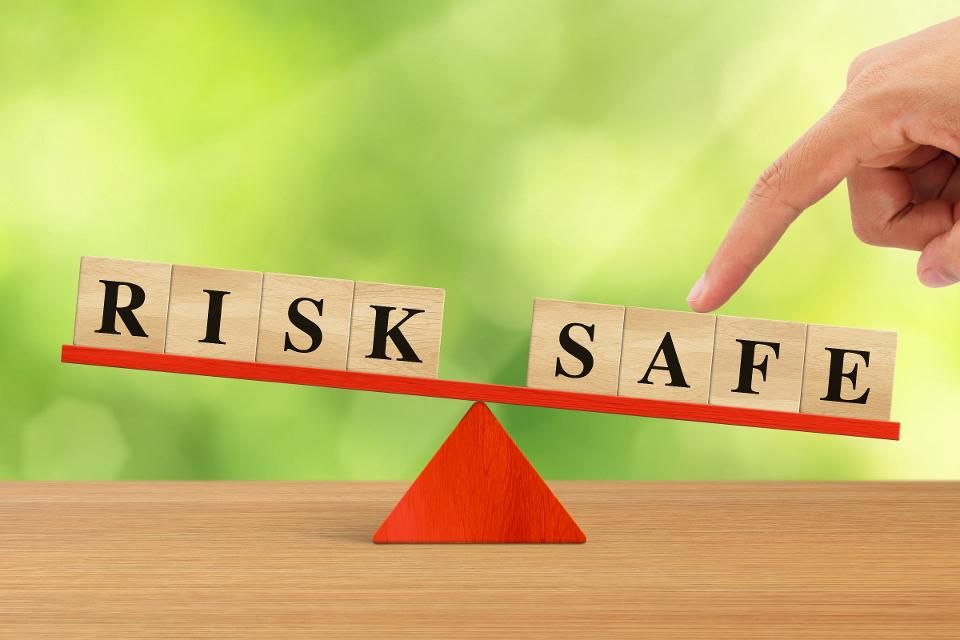When it comes to investing, understanding and assessing risk is crucial to building a successful portfolio. Every investment carries some degree of risk, whether it’s market volatility, economic fluctuations, or specific industry challenges. However, the ability to identify, measure, and manage risk can help you make informed decisions, potentially maximizing your returns while safeguarding your financial future. In this article, we’ll dive into the concept of investment risk, the different types of risks you may encounter, and the strategies you can use to assess and mitigate these risks to make smarter investment choices.
What is Investment Risk?
Investment risk refers to the possibility of losing some or all of your invested capital or not achieving the expected returns. All investments involve some level of risk, whether from the asset itself, the broader market, or external factors like geopolitical events. The key to effective investing lies in understanding these risks and making adjustments based on your financial goals and risk tolerance.
Types of Investment Risk
There are several different types of risk that can impact your investments, each with its own characteristics and implications. Here are some of the most common types of investment risks:

1. Market Risk
Market risk, also known as systematic risk, refers to the risk that the value of your investments will decline due to overall market movements. This risk is associated with factors like economic recessions, political instability, or natural disasters, which can negatively affect the financial markets. Since market risk affects the entire market, it is difficult to avoid through diversification.
- How to Assess Market Risk: Market risk can be measured using tools like beta (a measure of an asset’s volatility in relation to the overall market). A beta value of 1 indicates that the asset moves in line with the market, while a value above 1 suggests higher volatility, and a value below 1 indicates lower volatility.
2. Credit Risk
Credit risk refers to the possibility that a borrower or issuer of a bond may default on their obligations. This is particularly relevant for fixed-income investments like bonds, where the issuer may fail to make interest payments or repay the principal.
- How to Assess Credit Risk: Credit risk can be assessed by reviewing the credit rating of the issuer, provided by agencies like Standard & Poor’s, Moody’s, and Fitch. A higher credit rating suggests a lower risk of default, while lower ratings indicate higher risk.
3. Liquidity Risk
Liquidity risk arises when an investor cannot easily buy or sell an investment without significantly impacting its price. Illiquid assets are harder to sell in a timely manner, which could result in a lower sale price or potential losses.
- How to Assess Liquidity Risk: Evaluate the market volume and depth of the asset. Stocks and bonds of well-established companies tend to have high liquidity, whereas niche investments or assets in emerging markets may be less liquid.
4. Interest Rate Risk
Interest rate risk is the risk that the value of your investments, particularly bonds, will decrease due to a change in interest rates. As interest rates rise, the value of existing bonds typically falls because newer bonds with higher interest rates become more attractive to investors.
- How to Assess Interest Rate Risk: The sensitivity of a bond’s price to changes in interest rates is measured by its duration. The longer the duration, the greater the interest rate risk. If you hold long-term bonds, you may be more exposed to interest rate fluctuations.
5. Inflation Risk
Inflation risk refers to the risk that your investment’s returns will not keep pace with inflation, effectively reducing your purchasing power over time. This risk is particularly important for fixed-income investors, as inflation can erode the real value of their returns.
- How to Assess Inflation Risk: Monitor inflation trends and compare the expected return of an investment with the inflation rate. Investments such as stocks, real estate, or Treasury Inflation-Protected Securities (TIPS) can provide a hedge against inflation.
6. Political Risk
Political risk arises from changes in government policy, regulations, or political instability that could negatively impact your investments. This is particularly relevant for international investors who may face risks associated with the political climate in foreign markets.
- How to Assess Political Risk: Research the political stability of the country in which you’re investing. Stay informed about potential regulatory changes, political unrest, or new government policies that could impact market conditions.
Assessing Your Risk Tolerance
Understanding your risk tolerance is crucial when evaluating how much risk you are willing to take on with your investments. Your risk tolerance is influenced by factors such as your age, income, financial goals, investment experience, and overall financial situation.
- Risk Capacity vs. Risk Willingness: While your risk capacity refers to your ability to take on risk based on your financial situation, your risk willingness refers to your comfort level with potential losses. Both need to be considered when building your investment portfolio.
1. Age and Time Horizon
Generally, the younger you are, the more risk you can afford to take, as you have a longer time horizon to recover from potential losses. For older investors or those nearing retirement, a more conservative approach may be necessary to preserve capital and minimize risk.
2. Income and Financial Situation
If you have a stable income and financial security, you may be able to tolerate more risk. However, if your financial situation is uncertain, you might prefer safer, more conservative investments that provide steady returns.
3. Investment Experience
Experienced investors may feel more confident taking on higher levels of risk, especially if they have a deep understanding of the market and are able to use advanced strategies to mitigate risk. Newer investors may prefer a more cautious approach, investing in low-risk assets.
Tools to Assess and Mitigate Investment Risk
Several tools and techniques can help you assess and manage investment risk, ensuring you make well-informed decisions and minimize potential losses.

1. Diversification
Diversification is one of the most effective ways to manage risk. By spreading your investments across different asset classes, sectors, and geographic regions, you reduce the impact of any single underperforming asset. A diversified portfolio is less likely to be severely affected by a downturn in any one area.
- How to Diversify: Consider investing in a mix of stocks, bonds, real estate, commodities, and other asset classes. ETFs and mutual funds are excellent tools for diversification, as they typically invest in a wide range of assets.
2. Risk-Return Tradeoff
Investors must balance the desire for high returns with the potential for risk. Generally, the higher the potential return, the higher the associated risk. By assessing the risk-return tradeoff, you can decide if the potential rewards of an investment justify the level of risk involved.
- How to Assess: Use metrics like the Sharpe ratio, which measures the return on an investment relative to its risk. A higher Sharpe ratio indicates a better risk-adjusted return.
3. Stress Testing and Scenario Analysis
Stress testing and scenario analysis involve simulating extreme market conditions to understand how your investments might behave under adverse situations. This helps investors prepare for worst-case scenarios and understand the potential impact on their portfolios.
- How to Assess: Use software tools or work with a financial advisor to model various economic and market conditions, such as market crashes or economic recessions, and evaluate how your portfolio would react.
4. Regular Monitoring and Rebalancing
Investment markets are dynamic, and it’s essential to regularly monitor and rebalance your portfolio to stay aligned with your risk tolerance and goals. Over time, certain investments may outperform or underperform, altering your portfolio’s risk profile.
- How to Rebalance: Periodically review your portfolio to ensure that your asset allocation remains in line with your goals. If necessary, adjust your holdings to maintain the desired level of risk exposure.
Conclusion
Assessing risk is an essential step in the investment process. By understanding the different types of risks and using strategies like diversification, stress testing, and portfolio monitoring, you can make informed decisions that align with your financial goals and risk tolerance. Whether you’re a conservative investor seeking stability or an aggressive investor aiming for high returns, managing risk will help you build a resilient investment portfolio capable of weathering market fluctuations and achieving long-term success. Remember, investing is not about avoiding risk entirely, but about effectively managing and understanding it to maximize your potential for returns.

Leave a Reply